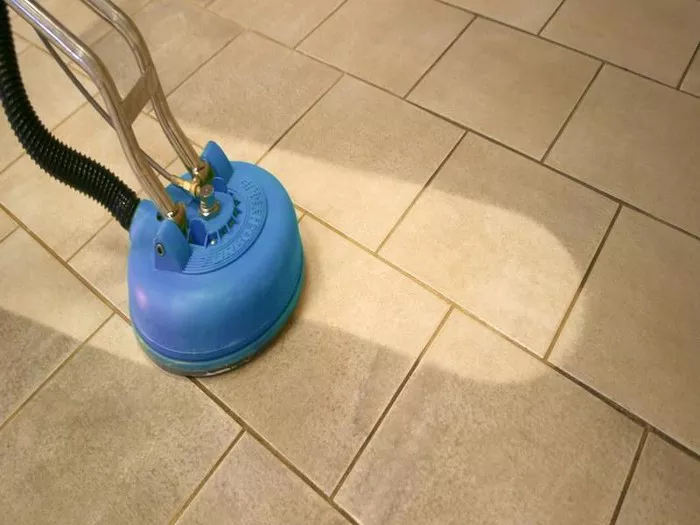Floor polishers are indispensable tools in the maintenance of various types of flooring, from hardwood to tile to concrete. They add shine, protect surfaces, and contribute to a cleaner and more attractive environment. However, like any piece of equipment, floor polishers can encounter issues that hinder their effectiveness and longevity. Understanding these common problems and implementing preventive measures can ensure smooth operation and maximize the lifespan of your floor polisher.
1. Uneven Applic ation of Polish
Problem:
One of the most prevalent issues with floor polishers is the uneven application of polish, leading to streaks or patches of inconsistent shine across the floor surface. This problem can occur due to several reasons, including improper technique, uneven pressure, or uneven distribution of polish on the pad.
Prevention:
I. Proper Training: Ensure that operators receive adequate training on how to operate the floor polisher correctly, including techniques for achieving even polish application.
II. Consistent Pressure: Encourage operators to maintain consistent pressure on the machine as they move it across the floor surface. Uneven pressure can result in uneven polish application.
III. Even Distribution: Prior to polishing, distribute the polish evenly on the floor pad to ensure uniform coverage during application.
2. Pad Slippage or Detachment
Problem:
Pad slippage or detachment can occur during operation, disrupting the polishing process and potentially causing damage to the floor surface. This problem often arises due to improper installation of the pad or worn-out attachment mechanisms.
Prevention:
I. Secure Installation: Ensure that the floor pad is securely attached to the polisher’s drive head before operation. Follow the manufacturer’s instructions for proper pad installation.
II. Regular Maintenance: Inspect the attachment mechanisms regularly and replace any worn-out components promptly to prevent pad slippage.
III. Correct Pad Selection: Use pads specifically designed for the type of flooring and the intended polishing task to minimize the risk of detachment.
3. Overheating
Problem:
Overheating is a common issue with floor polishers, particularly when they are used continuously for extended periods. Excessive heat buildup can lead to motor burnout, decreased performance, and potential safety hazards.
Prevention:
I. Cooling Breaks: Allow the floor polisher to cool down periodically during extended use, especially in high-temperature environments or when operating at high speeds.
II. Proper Ventilation: Ensure adequate ventilation in the area where the polisher is being used to dissipate heat effectively.
III. Regular Maintenance: Keep the motor and cooling vents clean and free of debris to facilitate optimal airflow and prevent overheating.
4. Poor Dust Collection
Problem:
Many floor polishers are equipped with dust collection systems to minimize airborne dust and debris during operation. However, these systems can become ineffective over time due to clogging or inadequate maintenance, leading to poor air quality and potential health hazards.
Prevention:
I. Regular Cleaning: Clean and inspect the dust collection system regularly to remove any accumulated dust, debris, or obstructions.
II. Filter Replacement: Replace the dust collection filters as recommended by the manufacturer to ensure optimal performance and air quality.
III. Proper Disposal: Dispose of collected dust and debris properly to prevent clogs and maintain the effectiveness of the dust collection system.
5. Electrical Issues
Problem:
Electrical issues, such as power surges, short circuits, or faulty wiring, can disrupt the operation of floor polishers and pose safety risks to operators.
Prevention:
I. Routine Inspections: Conduct regular inspections of the electrical components, cords, and connections for signs of wear, damage, or corrosion.
II. Ground Fault Circuit Interrupter (GFCI): Use floor polishers equipped with GFCI protection to minimize the risk of electric shock in case of electrical faults.
III. Professional Maintenance: Schedule periodic maintenance by qualified technicians to identify and address potential electrical issues before they escalate.
6. Excessive Noise
Problem:
Floor polishers can generate significant noise levels during operation, which can be disruptive to occupants and may even violate noise regulations in certain environments.
Prevention:
I. Noise Reduction Measures: Invest in floor polishers with noise-reducing features, such as sound-insulated housings or vibration-dampening components.
II. Operational Practices: Encourage operators to use the polisher during off-peak hours or in areas where noise won’t disturb occupants.
III. Personal Protective Equipment (PPE): Provide operators with hearing protection to minimize the risk of hearing damage from prolonged exposure to loud noise.
7. Inadequate Surface Preparation
Problem:
Inadequate surface preparation before polishing can result in poor adhesion of the polish, reduced durability, and unsatisfactory finish quality.
Prevention:
I. Cleaning and Degreasing: Thoroughly clean and degrease the floor surface before polishing to remove dirt, grime, and contaminants that could interfere with adhesion.
II. Surface Repair: Address any cracks, chips, or uneven areas in the flooring before polishing to ensure a smooth and uniform finish.
III. Compatibility Testing: Test the compatibility of the polish with the flooring material and any existing sealants or coatings to avoid adhesion issues or chemical reactions.
8. Improper Storage and Handling
Problem:
Improper storage and handling practices can contribute to damage, corrosion, or premature wear of floor polishers, reducing their lifespan and effectiveness.
Prevention:
I. Clean and Dry Storage: Store floor polishers in a clean, dry, and well-ventilated environment to prevent corrosion and mold growth.
II. Proper Handling: Handle the polisher with care to avoid dropping, tipping, or subjecting it to excessive force that could damage internal components.
III. Regular Inspection: Inspect stored polishers periodically for signs of damage, wear, or deterioration, and address any issues promptly.
Conclusion
While floor polishers are invaluable tools for maintaining clean, shiny, and attractive floors, they are not immune to problems that can affect their performance and longevity. By understanding the common issues associated with floor polishers and implementing preventive measures such as proper training, regular maintenance, and adherence to safety protocols, you can minimize downtime, maximize efficiency, and prolong the lifespan of your floor polishing equipment.

